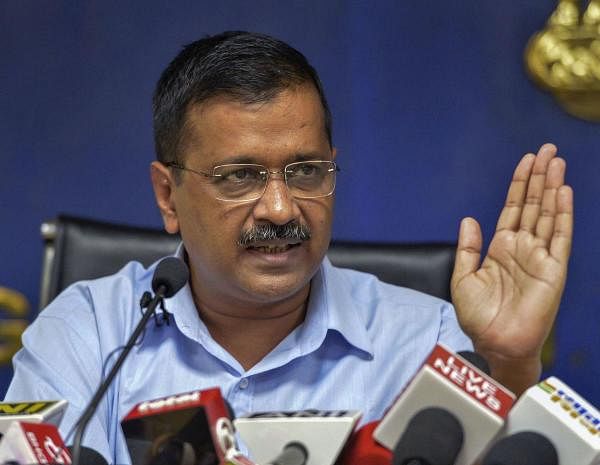
His government’s ‘mohalla’ clinics marked a milepost in India’s health care policy management because these facilities were spread over the national capital, with higher numbers in the under-serviced slums and low-end housing settlements, and afforded accessible and quality medical services. Arvind Kejriwal and his Aam Admi Party (AAP) cruised to a second victory in the Delhi elections this year on the back of the ‘mohalla’ clinics. The success of the project, coupled with a novel and refreshing approach to primary school education, gave hope to those who yearned for a government that would treat these sectors with the seriousness they merited and pull them out of obsolete policies and practices.
The ‘mohalla’—translated as area—clinics are three-tiered and offer primary, secondary and tertiary services through the dispensaries, multi-speciality poly-clinics and super-speciality hospitals. Nobody complained of doctors and paramedics gone AWOL and the unavailability of medicines. The consensus was Kejriwal had done a bang-up job on health.
Ideally, under the constraints that a quasi state like Delhi functions with a beady-eyed Centre looking over, Kejriwal should have tapped into the AAP’s experience in health care to manage the COVID-19 pandemic. At least to an extent. Until the country was under lockdown, things seemed fairly under control in the national capital. Once, the ‘unlock’ ushered in, a deep crisis with frightening ramifications, stared the people of Delhi in the face. Kejriwal did not come out as being on top of the situation.
Understandably, like the other chief ministers, he wanted to re-energise Delhi’s economy. He made a production of the re-opening of the liquor vends and the “record” revenues they notched up in a short span. If that was Kejriwal’s notion of bringing the economy on the rails, he had another thing coming. Delhi’s citizens, suffocated by the lockdown, spilled out in huge numbers on the streets and gave a go by to the prescribed protocol of hygiene and sanitation.
The chief minister’s constant stress on “normalising” the state of affairs had ramifications that spun out of control. The number of those infected as well as the casualties multiplied. On the last count, Delhi reported 34,687 cases with 12,731 recoveries and 1,085 deaths, coming third after Maharashtra and Tamil Nadu in terms of the total number of cases. Virtually, no testing takes place, following a Delhi government directive to ICMR-certified path labs to stop doing it. When hospitals protested their inability to admit patients without testing, the Delhi government bickered. It apparently targeted a well-known private hospital and two major ones under the Centre’s jurisdiction. It seemed as though after reaching a truce of sorts with the Centre, following his victory, Kejriwal was back to being petulant and belligerent by turn.
Compounding his plight was the perception that he was at fault although objectively speaking, the Centre couldn’t shirk its responsibility given the division of powers in Delhi that often binds a chief minister’s hands.
The last straw was an executive order from the Delhi government that restricted admission in the hospitals only to the residents of the national capital. Whatever its flaws, Delhi was never known to be xenophobic. The communal fault line often surfaced and manifested itself in the form of the violent assaults on Muslims January-February 2020 in the aftermath of the protests against the Citizenship (Amendment) Act. But the national capital was never known to shut its doors against those who came from afar to seek work and start small businesses.
The jingoistic overtones in Kejriwal’s decision were unmistakable. Delhi’s demography transmuted with the arrival of the people from Uttar Pradesh, Uttarakhand, Bihar, Jharkhand, Odisha and West Bengal to the extent that the “migrants” crystallised into a distinct voting group that was courted by the parties before an election. Kejriwal is a major recipient of the goodwill and support of the “migrants” after the Congress and the Bharatiya Janata Party (BJP) lost their votes. His detractors pointed out that he is from Haryana and a resident of Ghaziabad in Uttar Pradesh, while his close political aides including Manish Sisodia, the Deputy Chief Minister, are from Uttar Pradesh. Obviously, their geographical provenance did not matter to those who had voted them to power until Kejriwal highlighted a divide between the Delhiites and the “outsiders”.
Anil Baijal, the Delhi Lt-Governor, rescinded the order. Sisodia reacted strongly, saying the L-G would be culpable for the COVID-19-related deaths and for a while, it looked like the battle of yore was set to be fought again.
Clearly, Kejriwal learnt the hard way that the BJP-helmed Centre with Narendra Modi and Amit Shah in commanding positions was not to be trifled with. This was not a David Goliath combat. He quelled an incipient dispute, signalling peace with the L-G and calling on the home minister.
As the virus ravages Delhi, has Kejriwal given up on his social sector legacy to become a run-of-the-mill politician? Looks like.
(Radhika Ramaseshan is a Delhi based political analyst and columnist)
Disclaimer: The views expressed above are the author’s own. They do not necessarily reflect the views of DH.